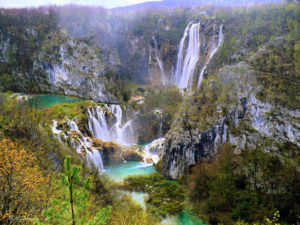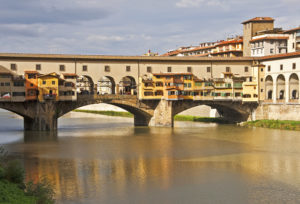Baby boomer travel
Today’s guest post is from travel blogger Shawn Michaels, who loves to write about his outdoor travel experiences ans shop for hiking gear. You can read his blog, which focuses on hiking boots, thesmartlad.com, here.
In this post, Shawn reveals his seven top hiking spots in Europe. Note that most of these are not exactly walks in the park — although one is just that, and another is relatively easy — but active backpacking boomers can set their sights on some or all of them.
I was only familiar with a few of these, but the photos alone make me want to grab my hiking sticks and see how far I can go through some of Europe’s most enticing scenery.
Story and photos by Shawn Michaels
Plitvička Jezera:

Plitvicka is a series of 16 adjoining lakes displaying emerald waters and waterfalls.
Croatia’s Plitvička Jezera (also… Continue reading

Cologne Cathedral on Rhine River at night — but watch for water levels. Photo by Dennis Cox/WorldViews
What are the best seasons to travel?
I’m tempted to answer that FAQ with a one-word answer: Anytime. You’ll almost always find something positive in any trip, even if it rains every day.
But that’s the easy way out. A lot depends on where you’re going and what your specific interests are in that place. And a few destinations are limited to one particular season of the year.
Weather is often — though not always — the key factor.
A trip to Finland in summer, for instance, is very different than a trip to Finland in winter. Both have their charms — as do the fall and spring seasons there, for that matter. But you might as well be traveling to two different countries in the Finnish July and January.
Most travelers… Continue reading

Kyoto’s Kinkaku-ji Zen Buddhist Temple of the Golden Pavilion. Photo by Dennis Cox/WorldViews
Barcelona, Spain. Udaipur, India. Siem Reap, Cambodia.
Rome and Florence, Italy. Santa Fe, New Mexico and Charleston, South Carolina, U.S..
Luang Prabang, Laos. Ubud, Indonesia (Bali).
Cape Town, South Africa. Hoi An, Vietnam.
Kyoto, Japan. Chiang Mai, Thailand.
Oaxaca and San Miguel de Allende, Mexico.
What do these cities have in common? If you said “very little,” you’;d be right, but you’d also be wrong.
They were all voted into the top 15 of the “World’s Top Cities” by the readers of Travel + Leisure Magazine. The criteria included sights/landmarks, culture, cuisine, friendliness, shopping, and overall value.
Where are the Usual Suspects?
Notable absences include London, Paris,. Venice, Prague, St. Petersburg, Istanbul, Jerusalem, Rio de Janeiro, Buenos Aires, New York, Chicago, San Francisco, Vancouver, Hong Kong…not even such trendy destinations as… Continue reading

Where in Asia would you find this location of Nathan’s Famous hot dogs? Answer: Malaysia. Photo from Nathan’s Famous.
Here are the answers to the How Much Do You Know About Independence Day? quiz from my previous post. (If you haven’t taken the quiz yet and want to, I’d suggest returning there first.) Some of these questions were tricky, others merely difficult, and a few were relatively easy, especially with True or False questions offering just two choices. The multiple choice questions seemed to give people the most trouble, based on feedback I received. Thanks for joining in, whether Baby Boomers or younger!
1. True or false: As one of the 13 original colonies, Vermont was the only one that refused to ratify the Declaration of Independence.
Answer: False. Vermont was not one of the original 13 colonies.
2. Which U.S. president was born on the Fourth… Continue reading
Americans all know about fireworks, barbecues, hot dogs, parades and the other modern-day manifestations of the July 4 holiday, but how much do you really know about Independence Day, especially as it relates to travel or travel destinations?
Take this quiz and find out. (Baby boomers, how well do you remember your history?)
1. True or false: As one of the 13 original colonies, Vermont was the only one that refused to ratify the Declaration of Independence.
2. Which U.S. president was born on the Fourth of July in Plymouth Notch, Vermont?
3. Name two Asian countries where you can now buy a Nathan’s Famous New York hot dog, similar to those gobbled up in the annual hot dog eating contest at New York’s Coney Island:
a. Indonesia and Japan
b.… Continue reading

Before you fly, make sure your medical condition won’t hold you back
Note: This is the fourth in a series of guest posts on traveling with a medical condition by British writer Laura Miller. In this post, Laura provides advice on flying with a medical condition and obtaining the right vaccinations and visas for your trip.
By Laura Miller
Flying with a medical condition
While traveling with many medical conditions is generally safe, airlines do have the right to deny passengers who could suffer complications in the air.
For those travelling by plane, the most common in-flight problems are:
• Neurologic events
• Cardiac events
• Respiratory events
• Gastrointestinal events
• Vasovagal syncope (fainting)
If you’re worried about the risk of being denied passage, it’s worth speaking to your doctor to ask for medical clearance. Consider if any of the following apply:
• You could compromise the safety of… Continue reading

Whether running with the bulls or leaving a museum in Pamplona, it pays to have travel insurance.
Getting travel insurance may seem like an afterthought, but there are times when it proves vital.
When my mother broke her hip in Pamplona, Spain — I’d like to say running with the bulls, but actually slipping and falling on her way out of a museum — she had a week’s stay in a hospital there and then a first-class flight home complete with nurse accompaniment, all covered by travel insurance.
It was one of the best investments my parents ever made, because the bill ran to something like $30,000-$40,000.
Many personal health insurance policies don’t cover medical costs abroad, so it pays to be on the safe side. For an outlay of perhaps five to 15 percent of the total cost of your trip, you could save yourself a significant… Continue reading

Florence, Italy, is a generally safe destination choice for those traveling with certain medical conditions. Photo by Dennis Cox/WorldViews
Note: This is the third in our series of Traveling with a Medical Condition, written by British journalist Laura Miller. Today Laura offers specific tips for traveling with cancer, a heart condition, or dementia.
By Laura Miller
Traveling with cancer
There’s no reason why a cancer diagnosis should limit your traveling. You’ll still want to see the world for the same reasons as everyone else and cancer shouldn’t be the barrier.
It’s not unusual for people with cancer to book up a holiday at the end of their treatment. On the other hand, others will have no qualms about leaving the country after being told the bad news.
However, it’s important to speak to your doctor and get their opinion before arranging a trip. You’ll then know the ins… Continue reading

South America is not out of reach for travelers with disabilities. Photo from riodejaneiro.com
Continuing our series on traveling with a medical condition — written by British freelance journalist Laura Miller — we’ll focus today on traveling with a disability.
If you missed Laura’s first post in the series, you can read her top tips for traveling with a medical condition here.
Laura provides a wealth of tips and advice that I’m sure many baby boomer travelers — and their traveling partners — will find helpful and reassuring.
By Laura Miller
In today’s world, travel isn’t restrictive. Regardless of whether you’re fit and healthy, have a physical impairment, learning disability, or any other condition, there’s no reason to avoid traveling.
You can visit even the most exotic of destinations: from South America to Southampton, a disability shouldn’t stop you from seeing the world.
Here’s how:
Planning… Continue reading

A Malaysian medical team at work; if you carry your medical ID, they’ll know how to treat you
With the oldest baby boomers now in their early seventies and the youngest in their early fifties, traveling with medical conditions has become a major issue for the baby boom generation.
British freelance writer Laura Miller has compiled a practical guide to coping with medical conditions while on the road (or in the air, on the water, etc.), so that all of us with medical issues can enjoy our travels to the utmost.
Her guide is long enough that I’ll be running it over the course of several posts, so stay tuned for more. My thanks to Laura for providing us access to this important series.
By Laura Miller
Having a chronic or serious medical condition doesn’t mean you can’t travel safely — but you will need to take… Continue reading










